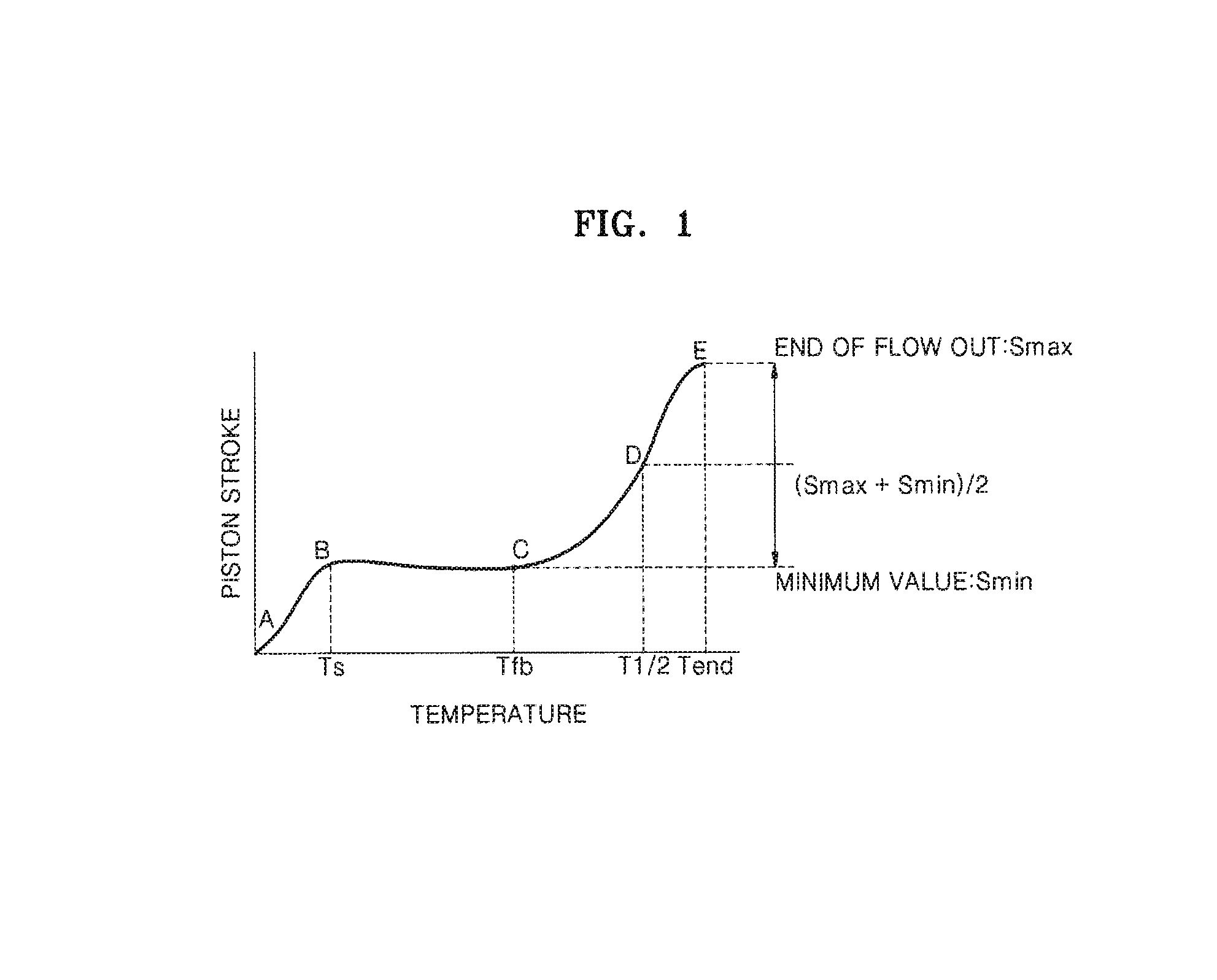Method of preparing environment-friendly toner
- Summary
- Abstract
- Description
- Claims
- Application Information
AI Technical Summary
Benefits of technology
Problems solved by technology
Method used
Image
Examples
preparation example 1
Synthesis of Polyester Resin 1
[0087]A 3 L reactor equipped with a stirrer, a nitrogen gas inlet, a thermometer, and a cooler was installed in an oil bath in which the oil is a heat transfer medium. 45 g of terephthalic acid, 39 g of isophthalic acid, 75 g of 1,2-propylene glycol, and 3 g of trimellitic acid were added to the reactor, and tetrabutyl titanate was added thereto as a catalyst at a ratio of 500 ppm with respect to the total weight of the monomers. The reactor was heated to 150° C. while stirring at 150 rpm. The reactor was maintained at the same temperature for 6 hours and heated to 220° C. Then, the pressure of the reactor was reduced to 0.1 torr in order to remove byproducts, and the reactor was maintained at the same pressure for 15 hours to obtain polyester resin 1.
preparation example 2
Synthesis of Polyester Resin 2
[0088]137 g of dimethyl terephthalate, 55 g of dimethyl isophthalate, 68 g of ethylene glycol, 175 g of a bisphenol A derivative including ethylene oxide, and 0.1 g of tetrabutoxy titanate, as a catalyst, were added to an autoclave equipped with a thermometer and a stirrer. The autoclave was maintained at a temperature in the range of 150 to 220° C. for 180 minutes to perform trans-esterification. Then, the autoclave was heated to 240° C., the pressure of the autoclave was gradually reduced to 10 mmHg for 30 minutes, and then the autoclave was maintained at the same pressure for 70 minutes. The inside of the autoclave was replaced with nitrogen gas, the pressure thereof was adjusted to atmospheric pressure, and the autoclave was cooled to 200° C. Then, 2.0 g of trimellitic acid was added thereto, and the autoclave was maintained at the same pressure for 70 minutes to obtain polyester resin 2.
preparation example 3
Synthesis of Polyester Resin 3
[0089]215 g of terephthalic acid, 485 g of isophthalic acid, 468 g of 2,2-dimethyl-1,3-propane diol, 156 g of 1.5-pentane diol, and 0.41 g of tetrabutyl titanate, as a catalyst, were added to a reactor equipped with a stirrer, a condenser, and a thermometer. The reactor was maintained at a temperature in the range of 160° C. to 230° C. for 4 hours to perform esterification. The pressure of the reactor was gradually reduced to 5 mmHg for 20 minutes, and the reactor was maintained at 260° C. in a vacuum of 0.3 mmHg or less for 40 minutes to perform polycondensation. The reactor was cooled to 220° C. in a nitrogen atmosphere. Then, 23 g of trimellitic acid was added thereto, and the reactor was maintained at the same temperature for 30 minutes to obtain polyester resin 3.
PUM
| Property | Measurement | Unit |
|---|---|---|
| Percent by mass | aaaaa | aaaaa |
| Percent by mass | aaaaa | aaaaa |
| Percent by mass | aaaaa | aaaaa |
Abstract
Description
Claims
Application Information
 Login to View More
Login to View More - R&D
- Intellectual Property
- Life Sciences
- Materials
- Tech Scout
- Unparalleled Data Quality
- Higher Quality Content
- 60% Fewer Hallucinations
Browse by: Latest US Patents, China's latest patents, Technical Efficacy Thesaurus, Application Domain, Technology Topic, Popular Technical Reports.
© 2025 PatSnap. All rights reserved.Legal|Privacy policy|Modern Slavery Act Transparency Statement|Sitemap|About US| Contact US: help@patsnap.com

